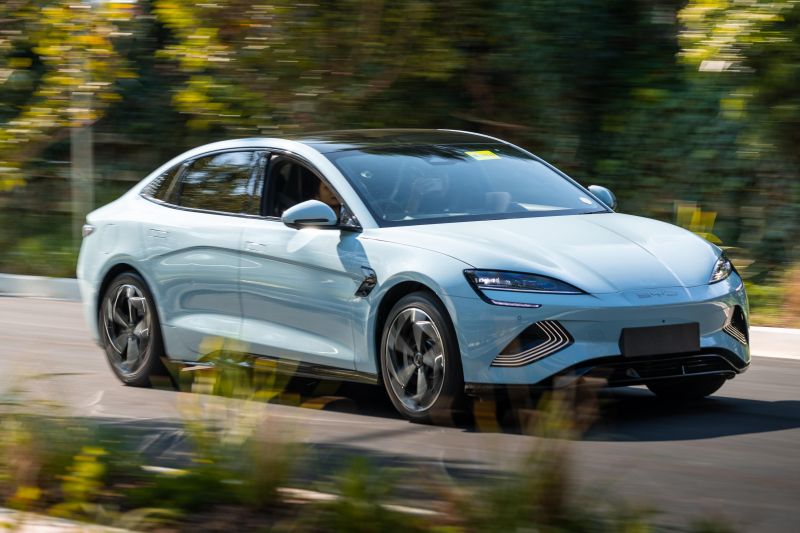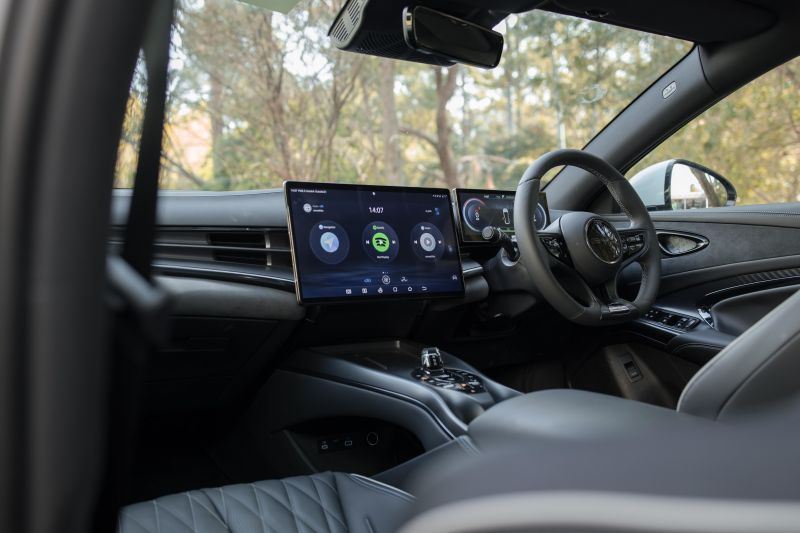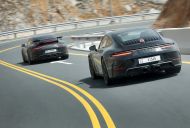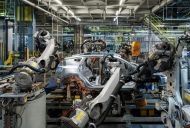Chinese electric vehicle (EV) company BYD is gearing up to launch its Seal sedan, which will go head-to-head with the Tesla Model 3.
It’ll be BYD’s third model in Australia, after the successful Atto 3 SUV (more than 10,000 have been sold here) and the Dolphin that goes on sale this year.
While pricing and full specifications for the Seal are due to be announced shortly for Australian-delivered cars, BYD has confirmed three variants for our market.
The entry-level Standard Dynamic Range features a single-motor rear-wheel drive powertrain with 150kW of power, and is able to go from 0-100km/h in 7.5 seconds. It has a WLTP range of 460km.
The mid-spec Premium Extended Range ups the power to 230kW to the rear wheels with a sprint time of 5.9 seconds to 100km/h. Range is 570km (WLTP).
The range-topping Performance AWD version gets 390kW of power from its 160kW front motor and 230kW rear motor, and is able to accelerate from 0-100km/h in 3.8 seconds. It has an EV range of 520km (WLTP).
There are four drive modes: Eco, Normal, Sport and Snow.
The Seal stretches 4775mm long, and boasts 402L of boot space plus 53L under the bonnet.
Designed under BYD global design director Wolfgang Egger (formerly the Audi Group’s head designer), the Seal is said to use an ‘Ocean Aesthetic’ design language with the look and feel of a sports sedan, complete with sculptured curves that follow the momentum of waves.
The Seal is slippery, boasting one of the industry’s lowest drag coefficients: just 0.219 Cd.
By the way, don’t expect to see the polarising Build Your Dreams badging on the rear as the company moves away from this motif.
The Seal is the first BYD model to adopt its all-new e-Platform 3.0 electric vehicle platform featuring Cell-to-Body (CTB) technology, which fully integrates BYD’s Blade battery into the entire vehicle structure for greater rigidity and safety.
It offers maximum DC charging power of 150kW, and BYD says the vehicle can be charged in 26 minutes.
Billed as a sports sedan, the Seal features double wishbone suspension up front and a multi-link set-up down back.
In order to minimise or eliminate loss of traction under heavy loads the Seal also employs the latest iTAC (Intelligence Torque Adaption Control) technology, as its own version of torque vectoring.
All Seal variants also get a suite of advanced driver assistance systems (ADAS) as standard, including autonomous emergency braking (forward and reverse), rear-cross traffic alert assist, lane-keep assist and emergency lane-keep assist.
Inside, there’s a rotating 15.6-inch multimedia touchscreen display, as well as a full-size digital driver’s display.
The infotainment system features an intelligent voice assistant, while the BYD App allows you to remotely control functions like the climate control.
An onboard 4G connection supports over-the-air updates, which can include new features.
Standard equipment includes a 12-speaker, 775W Dynaudio sound system; eight-way power driver’s seat (four-way for front passenger seat); four-way power-adjustable steering wheel; and four-way lumbar adjustability for the top-tier AWD variant.
In addition, the front seats in both mid and top-spec variants get heating and ventilation.
There’s also a huge 1.9m panoramic glass roof, while the Seal’s front doors are double-glazed for better heat and sound insulation. At the rear there’s privacy glass.
BYD Seal comes in the following exterior colours:
Arctic Blue, Atlantis Gray, Polar White, Cosmos Black and Shark Gray
Two interior trim colours are available; Tahiti Blue (limited edition) and Thaumas Black
Stay tuned to CarExpert for more coverage on the BYD Seal.
MORE: Everything BYD Seal









